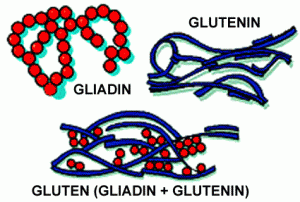 To say Phoebe Lawless’s pies are award winning would be an understatement. Her bakery, Scratch in Durham, North Carolina consistently makes lists for the best pies in America. Her key is knowing pies—well. Phoebe’s secret, finding that balance in the pie filling’s moisture content. “There is small spectrum of viscosity. The pie cannot be stiff and look like it’s from a cafeteria. Nor can it be a river of juice with a soggy crust.” The amounts of various components of the pie need to be adjusted based on the moisture content of each one. Summer apples have higher moisture contents than fall apples. Butters can range widely in their moisture content as well.
To say Phoebe Lawless’s pies are award winning would be an understatement. Her bakery, Scratch in Durham, North Carolina consistently makes lists for the best pies in America. Her key is knowing pies—well. Phoebe’s secret, finding that balance in the pie filling’s moisture content. “There is small spectrum of viscosity. The pie cannot be stiff and look like it’s from a cafeteria. Nor can it be a river of juice with a soggy crust.” The amounts of various components of the pie need to be adjusted based on the moisture content of each one. Summer apples have higher moisture contents than fall apples. Butters can range widely in their moisture content as well.
Even the crust depends on the right moisture. First, you need moisture in the crust to convert to steam during baking. The steam creates pockets of air in the crust that both raise and help create the flakiness of the crust. Part of this moisture for the piecrust comes from butter, which contains water trapped between all that delicious fat. One needs to distribute butter chunks throughout the crust as these eventually form the steam pockets. Large butter clumps equal a few larger pockets. Blend the butter too fine into the crust and you lose all the steam pockets. But all butters are not created equally. Butter fat content, the tasty inverse of water content, can vary between 80-86% in the United Sates. European butters typically contain more butter fat and even less water. “We get our butter from the same dairy every year. I need to minimize the variability in water content of the butter to ensure a high consistency in the quality of my crusts,” Phoebe tells me as I consume yet another southern pastry at her shop.
 Second, water is vital to the formation of gluten. Wheat flour contains two kinds of proteins, glutenin and gliadin, found readily inside the wheat kernel. These stored proteins within the seed help nourish young plants during germination. Interestingly both of these proteins are water insoluable. Through the process of hydrolysis these proteins get hydrated allowing linkages to form between them. These chemical bonds between the glutenin and gliadin form gluten. Kneading the wet dough ensures that the glutenin and gliadin come into constant contact to form these gluten strands. The more kneading and water, the more gluten formation and that can quickly turn a piecrust into bread. Consider that a piecrust usually only relies upon the moisture in the butter and a tablespoon of water compared to the ½ cup to whole cup of water needed for a bread recipe. The key with a piecrust is to find the right amount of moisture. As Phoebe notes, “I want a crust with the right number of gluten strands to give chewiness. Not too flakey or the crust will break, but not too doughy either. I want a piece of pie that I can pick up and hold.”
Second, water is vital to the formation of gluten. Wheat flour contains two kinds of proteins, glutenin and gliadin, found readily inside the wheat kernel. These stored proteins within the seed help nourish young plants during germination. Interestingly both of these proteins are water insoluable. Through the process of hydrolysis these proteins get hydrated allowing linkages to form between them. These chemical bonds between the glutenin and gliadin form gluten. Kneading the wet dough ensures that the glutenin and gliadin come into constant contact to form these gluten strands. The more kneading and water, the more gluten formation and that can quickly turn a piecrust into bread. Consider that a piecrust usually only relies upon the moisture in the butter and a tablespoon of water compared to the ½ cup to whole cup of water needed for a bread recipe. The key with a piecrust is to find the right amount of moisture. As Phoebe notes, “I want a crust with the right number of gluten strands to give chewiness. Not too flakey or the crust will break, but not too doughy either. I want a piece of pie that I can pick up and hold.”
